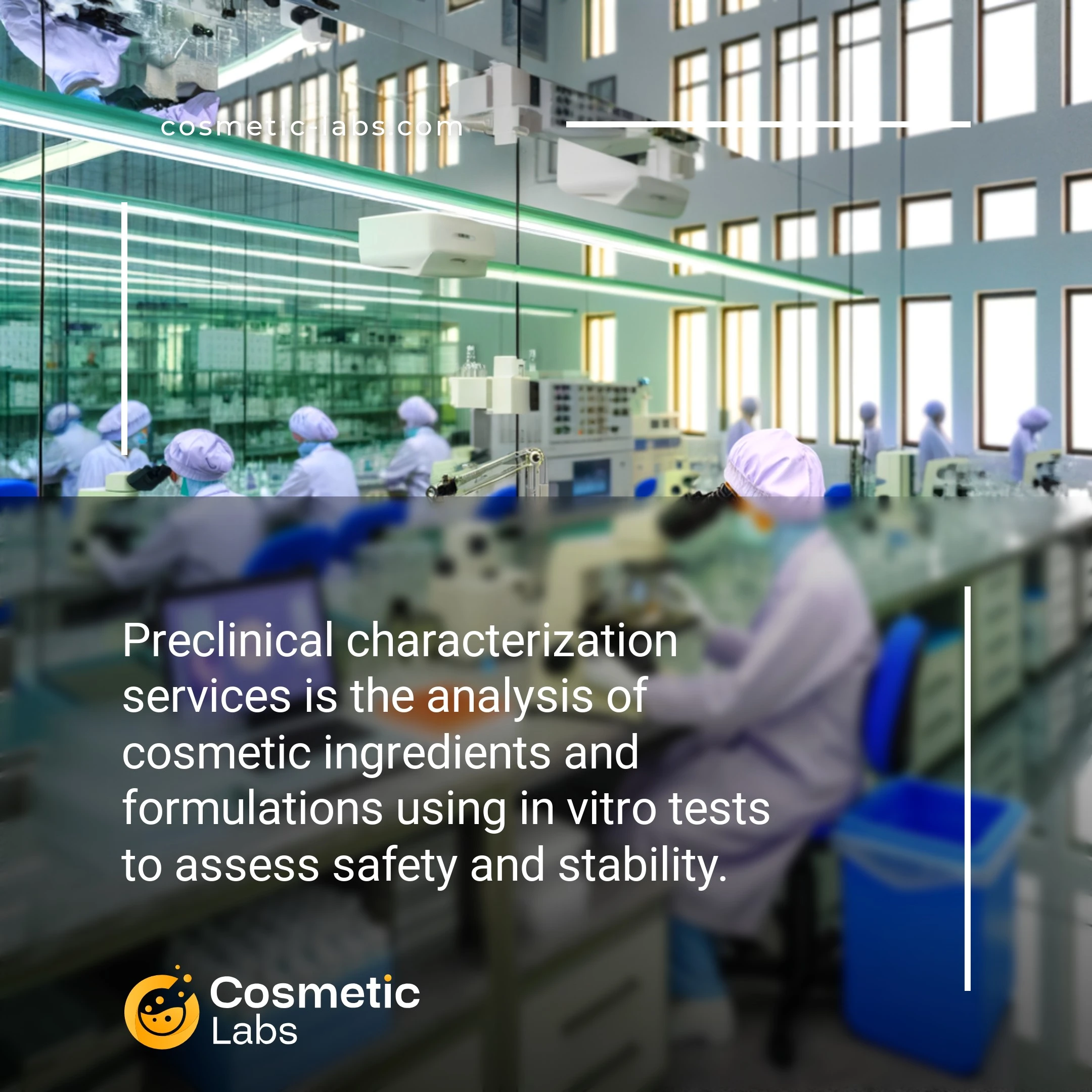Preclinical Characterization Services for Reliable Cosmetic Product Development

What is Preclinical characterization?
Preclinical characterization services analyze your cosmetic formulations through physicochemical testing, stability studies, and compatibility assessments during product development. Labs on our platform use techniques like particle size analysis, pH testing, and accelerated aging studies to predict how your products will perform over their shelf life—catching formulation issues that save you from costly recalls later.
Why do you need this service?
Cosmetic labs apply preclinical characterization to validate ingredient compatibility before full-scale production, saving brands thousands in reformulation costs. These services reveal how your serum’s active peptides interact with preservatives at different pH levels, ensuring stable shelf life of 24+ months. Labs also characterize particle size distribution in mineral sunscreens to predict skin feel and SPF performance.
Who provides Preclinical characterization services?
All cosmetic labs providing Preclinical characterization services
There is no company providing these services at the moment.
Preclinical Characterization Services
Preclinical characterization forms the backbone of cosmetic product development, giving you detailed insights into your formula’s properties before moving to clinical trials. Labs on our platform offer comprehensive characterization testing that reveals how your products behave at the molecular level.
Physical and Chemical Analysis
Partner labs analyze your formulas using advanced instrumentation to determine key properties. They measure particle size distribution, viscosity profiles, and pH stability across different conditions.
Standard characterization tests include:
- Rheological analysis for texture and spreadability
- Thermal stability testing (freeze-thaw cycles)
- Microscopy for emulsion structure
- Spectroscopy for ingredient interactions
These tests help predict how your product will perform during storage and application.
Tolerance Assessmen
Before moving to clinical studies on volunteers, labs screen your formulas using in vitro methods to assess skin compatibility. They use reconstructed tissue models and cell cultures to evaluate irritation potential.
Key biocompatibility assessments cover:
- Cytotoxicity testing on skin cell lines
- Phototoxicity screening for sun-exposed products
- Ocular irritation models for eye-area cosmetics
- Sensitization prediction assays
Results from these alternative testing methods guide formula refinements and support safety documentation. Most labs provide detailed reports with recommendations for formula optimization based on test outcomes.
Key Applications of Preclinical Characterization in Cosmetic Development
Preclinical characterization forms the backbone of successful cosmetic product launches by validating formulation stability, safety profiles, and performance claims before market entry.
Raw Material Screening and Compatibility Testing
Labs perform preclinical characterization of active ingredients through rheological analysis, particle size distribution, and pH stability testing. These assessments determine how raw materials interact within formulations over time.
Compatibility matrices reveal ingredient interactions at different concentrations and temperatures. For instance, labs test vitamin C derivatives at 5%, 10%, and 15% concentrations across pH ranges of 4.5-7.0 to establish stability windows. This data guides formulation decisions and prevents costly reformulations later.
Texture Profile Analysis for Sensory Prediction
Texture analyzers measure spreadability, firmness, and adhesiveness to predict consumer experience before human panel testing. Labs quantify these parameters using penetration tests (0.5-50mm depth) and compression cycles.
Results translate directly to product claims—a cream showing 15-20g peak force indicates lightweight texture, while 40-50g suggests rich, luxurious feel. These objective measurements replace subjective descriptions and accelerate development timelines by 30-40%.
| Characterization Method | Parameters Measured | Typical Timeline | Application Example |
|---|---|---|---|
| Microscopy Analysis | Particle size, dispersion quality | 2-3 days | Sunscreen uniformity testing |
| Thermal Profiling | Melting point, phase transitions | 1-2 days | Lipstick stability assessment |
| Rheological Testing | Viscosity, yield stress, thixotropy | 3-4 days | Serum flow behavior |
| Zeta Potential | Surface charge, emulsion stability | 1 day | Cream formulation optimization |
Connect with specialized cosmetic labs on our platform to access these preclinical characterization services and accelerate your product development timeline.
